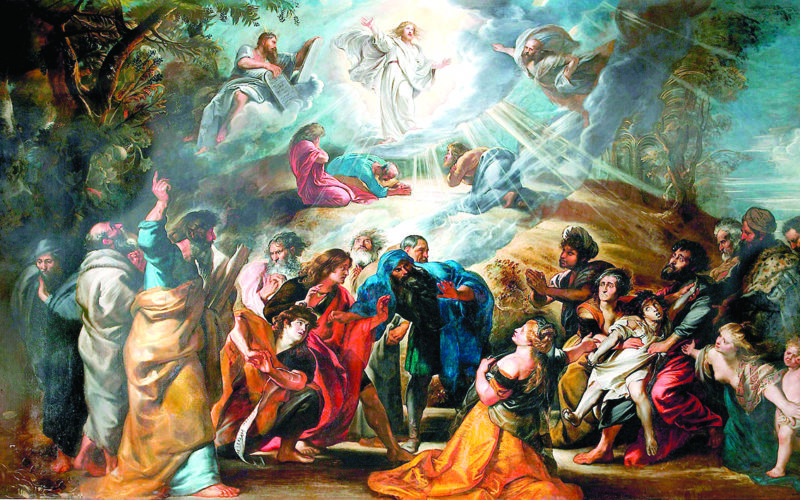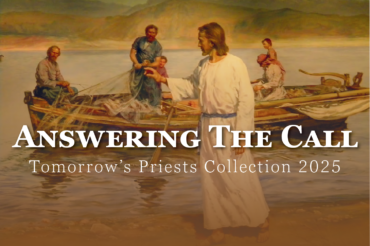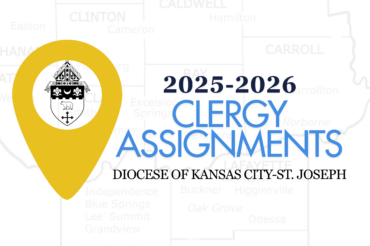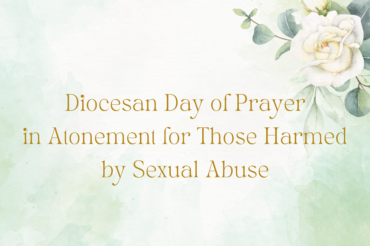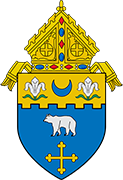This is my beloved Son
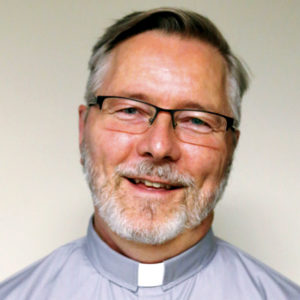
God’s Word in Everyday Living
Deacon Scott McKellar
In this Sunday’s readings we celebrate Jesus’ Transfiguration. “After six days” Jesus took Peter, James and John up a high mountain, and he is transfigured before them.
It is likely that the “six days” and “high mountain” echoes, for Mathew, the events in Exodus 24:15–16. In this passage “Moses went up on the mountain, and the cloud covered the mountain” and “the glory of the Lord settled on Mount Sinai, and the cloud covered it six days.” On the seventh day Moses heard the voice of God speaking. In Matthew the mountain is frequently a place of revelation (cf. 4:8; 5:1; 8:1; 14:23; 15:29; 28:16).
In the previous chapter, Jesus asks his disciples, “Who do people say the Son of Man is?” While popular perceptions were clearly wrong, Peter rightly confesses that Jesus is the Messiah, the Son of the living God (16:16).
Jesus says that Peter’s confession revealed to him by the heavenly Father (16:17). Now on the mountain the hidden truth about Jesus becomes visible. Jesus is ‘transformed’ (Greek metamorphoō) and “his face shone like the sun and his clothes became white as light.” In Exodus 34: 29, 30, and 35 Moses face also shone after being in the presence of God.
Jesus is a type of New Moses, but he is greater than Moses. In Jesus case, the shining of his face is not reflected glory but the true presence of God the Son (Hebrews 1:3). Suddenly Moses and Elijah appear and begin to converse with Jesus. Do they represent the law and the prophets? It is also possible to see them as heralds of the Messiah sent to reveal his presence.
All of this sets the stage for the most important event, a bright cloud covers them, and a voice calls out, “This is my beloved Son, with whom I am well pleased; listen to him.” (17:5) These are the same words that the heavenly voice speaks earlier at Jesus’ baptism by John (3:17), but here the voice adds “listen to him.” These final words echo Deuteronomy 18:15. Moses prophesied in this verse that, in the future, a prophet like Moses would come to the people. Moses demanded that the Israelites “listen carefully” to that messianic figure.
What do these words of the Father spoken from the cloud teach us? As the Fathers of Second Vatican Council remind us;
“God chose to reveal Himself and to make known to us the hidden purpose of His will (see Eph. 1:9)” so that we might “come to share in the divine nature (see Eph. 2:18; 2 Peter 1:4)” (Dei Verbum 2).
The hidden and invisible God has chosen to reveal himself “out of the abundance of His love” and to call us friends (John 15:14-15) . . . so that “He may invite and take them into fellowship with Himself” (DV 2).
Jesus is the fullness of revelation, the Word made flesh. In the secret inner life of the Godhead, Jesus is the Son. But through communion with him (Romans 6:3; 1 Corinthians 12:13; Galatians 3:27) we also become sons and daughters of God and “partakers in the divine nature” (2 Peter 1:4).
As St. Paul writes to the Galatians; “As proof that you are children, God sent the spirit of his Son into our hearts, crying out, “Abba, Father!” (Galatians 4:6). Again St. Paul reminds us, “you received a spirit of adoption, through which we cry, “Abba, Father!” The Spirit itself bears witness with our spirit that we are children of God” (Romans 8:15-16).
This is a seismic shift in thinking. No longer do we have merely the artifact alone, the law and the prophets written in a book, but now we have the Word made flesh. As the writer to the Hebrews puts it, “In times past, God spoke in partial and various ways to our ancestors through the prophets; in these last days, he spoke to us through a son, whom he made heir of all things and through whom he created the universe” (Hebrews 1:1-2).
Jesus transfiguration is a revelation of his true nature and an invitation to share in the intimacy of God’s own family as sons and daughters of God. We enter into communion with him through Baptism and the reception of the Eucharist. But as the Fathers of Second Vatican Council have pointed out, to experience this communion we must offer the “obedience of faith” (Rom. 16:26; see 1:5; 2 Cor 10:5-6) . . . “an obedience by which man commits his whole self freely to God, offering the full submission of intellect and will to God who reveals” (DV 5).
Yet this is not an individualistic faith, a “me and Jesus” alone faith. We are called to be a son or daughter in a family of faith. Our relationship with God is mediated through Jesus as he is reflected in the life of those who have embraced this faith. Just as the light of God’s grace shone in the face of Moses now the light of Jesus shines in the faces of men and women who have made this fundamental commitment to say ‘yes’ to Jesus.
For Christians, fellowship is much more than coffee and doughnuts! It is an invitation to a community which mediates faith is all its fullness. It is a call to action, an invitation to divine intimacy, and a memory of a shared life a as family. The hidden and invisible God now shines forth inviting us with God’s own initiative.
God’s own ‘Yes’ to us precedes his invitation. As St. Paul reminds us, “But God proves his love for us in that while we were still sinners Christ died for us” (Romans 5:8). It is the Spirit of God who draws us to the heart of the Father. A St. Paul reminds us the love of God has been poured into our hearts through the Holy Spirit (Romans 5:5).
The season of Lent is the perfect time to renew our commitment to a deeper relationship with God. Imagine what would happen if each one of us took time for silence and prayer this week. Have we been attentive to the light of Christ reflected in the faces of the saints? Have we accepted our Father’s loving embrace through the lives of our faith community?
Deacon Scott McKellar is Pastoral Associate at St. Therese Parish, North.
For this Sunday’s scripture readings and readings throughout the year, visit the USCCB website.

